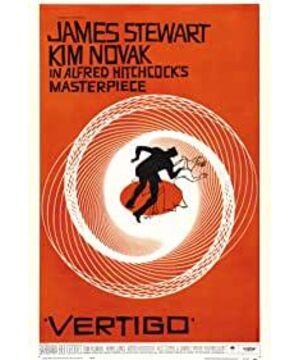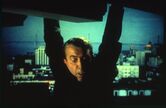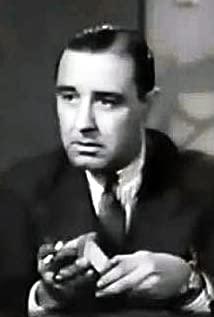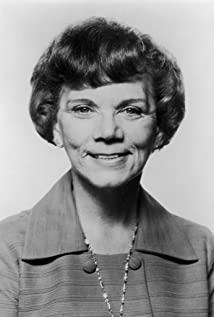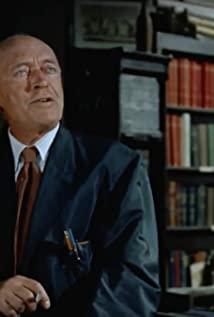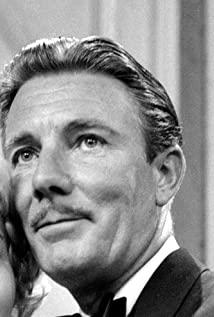This is Hitchcock’s most intense mental fanatical work so far. Detective James fell in love with his friend’s wife, Madeleine. He thought that Madeleine was no longer alive. After searching again and again, he found Judy, a woman who resembled the dead, wholeheartedly. Control Judy's willpower.
At the end, Judy’s miserable scream came to an end. This ending is really within the controllable range but also in the imagination of the audience out of control. The director’s works created in the 1950s, superb lens operation ability, and super-stream of consciousness mental state expression. Techniques, intricate story structure, maze-like setting of reality and illusion. The director expressed the subtle psychological game between men and women from the perspective of God, and the men in his eyes are born with the value of initiative and spy. When this mystery was revealed ruthlessly, it made me realize that maybe we are deeply attached to some people. , Some things, in fact, come from the beauty of the first memory.
Ending the first holiday of 2021 in intense anxiety and horror, Kim Novak, the heroine who played Judy, was really brilliant in her crazy acting skills. This is not a ecstasy but a horror.
Movie Highlights (Reposted from Zhihu)
Although "Victorius" is now widely regarded as one of the greatest movies in history , except for Hitchcock and Stewart, they won the Best Director Award and Best Actor at the 1958 San Sebastian International Film Festival. In addition to awards, the box office and film reviews of the year were generally unsatisfactory [39]. Hitchcock blamed Stewart for being "too old" in disappointment. In the next film "Northwest", he found Gary Grant, who was 4 years older than Stewart, starred, and Stewart, who was also disappointed, didn't go on. Cooperate with Hitchcock, but after that they will still appear in public and sit together at the same time.
❤ Tolerance makes space.
❤ This world is not lack of good man, after experiencing setbacks blow against lack is still good
Data 1: Hitchcock: The first one hundred great directors in history (transferred from China History Network)
Hitchcock's life
Early experiences
Alfred Hitchcock was born into a Catholic family in Leytonstone, London, England. When he was young, he was imprisoned by the police for being naughty, and he developed a lifelong phobia of the police. In 1907, he moved with his family to London, England.
In October 1910, he started a three-year study life at St. Ignatius School in London. In 1913, he graduated from St. Ignatius School in London. On December 12, 1914, he received short-term training at the Engineering Shipping School, during which he learned about machinery, electricity, power, and navigation.
In 1915, worked in Henry Telecom Company. In 1918, Hitchcock entered a telegraph company as an engineer and studied art at the University of London. In June 1919, the short story "Narcotics" was published in the corporate magazine founded by the company.
British period
In 1920, Alfred Hitchcock entered the film industry as a subtitle designer; in the same year, he nominated himself to enter a studio of Lasky Star Company of the United States in Elinston, and was promoted from a subtitle designer to The position of director, and then began to guide the filming of no dialogue scenes.
In 1922, Alfred Hitchcock studied under the American director George Fitzmorris and learned filmmaking skills from other film technicians. At the end of the year, he began to direct his first film "No. 13". But because of the break of the funding chain, the filming was not completed; in the same year, he served as the screenwriter, art designer, deputy director and assistant director of the romance film "Woman vs. Woman".
In 1923, he became the assistant director of Graham Katz; in the same year, he participated in the directing of the feature film "Always Tell Your Wife". In 1924, he participated in the production of the silent film "White Shadow" and served as the assistant director, editor and production designer of the film. In 1925, he shot the crime-themed movie "Happy Garden", which was the first independently directed by Hitchcock, and gave him the opportunity to study film production at the UFA studio in Germany; in the same year, he directed crime-themed movies "douchebag".
Introduction to Hitchcock_Hitchcock's life_Hitchcock's experience
In May 1926, the directed thriller "Mountain Eagle" was released in Germany; in the same year, the suspense film "The Tenant" was filmed, and the crime transfer method was used for the first time in the film; as the first suspense film directed by Hitchcock, the film The angle of photography, the makeup set, and the composition of light and shadow have all been influenced by the German expressionist style . This film has also become a work that established Hitchcock's personal style.
In 1927, he served as the director of the thriller "Downhill", which continued the German expressionist style; in the same year, he signed a contract with the British International Film Company; in addition, he also served as the director and screenwriter of the feature film "The Ring", and was filming The film adopted a realist style. In 1928, he directed the romantic comedy "The Farmer's Wife", which was also his first comedy film; in the same year, he filmed the feature film "Sweet Girl".
In 1929, he served as the director of the romance film "The Menkes" and incorporated documentary elements into the film; in the same year, he completed the filming of the suspense thriller "Blackmail", which became the first sound film in the history of British cinema. He was selected into the "Top 100 British Film History" list by the British magazine "Time Out".
In 1930, served as the director and screenwriter of the feature film "Juno and the Peacock"; on July 31, directed the thriller and mystery film "Murder" in the UK; in the same year, participated in the director of the musical "The Voice of Elster" Work.
On February 26, 1931, the self-written and self-directed feature film "Scam" was released in the UK; in March, he directed the thriller and mystery film "Mary"; in the same year, he served as the director and screenwriter in the romantic comedy "Strange Rich Man". In 1932, Hitchcock directed the thriller "The Seventeenth"; in addition, he also served as the director of the romance film "A Generation of Confidantes"; in the same year, he resigned from the British International Film Company.
In 1933, he directed the romantic comedy "The Waltz of Vienna"; in the same year, he was hired by the British Gaomeng Pictures Company. In 1934, he served as the director of the thriller and mystery film "Capture the Murder". In 1935, the thriller film "Thirty-Nine Steps" was filmed; the film has the style characteristics of Hitchcock's American period movies, and made McGeffen's technique gain attention in the film industry; in addition, the film was also selected by the British Film Magazine "Empire" announced the "100 Greatest British Movies in Film History" list.
In May 1936, the directed love thriller "Secret Spy" was released in the UK; in December, the thriller filmed "Destruction" was released; in the same year, he joined Gaines Barlow's production company. In 1937, filming the crime movie "Young Girl".
In July 1938, he signed a contract with independent producer David Selznick; November 1st, directed the thriller mystery film "The Missing Woman" was released in the United States; this film combines comedy, suspense, thriller, etc. Film elements became the work that laid the Hitchcock thriller film style.
In addition to winning the 4th New York Film Critics Association Award for Best Picture, the film was also selected into the "100 Greatest British Films in Film History" list published by the British film magazine "Empire", and Hitchcock personally relied on The film won the 4th New York Film Critics Association Award for Best Director ; in the same year, he directed the crime film "Jamaica Inn".
American period
In March 1939, he moved to Los Angeles, USA; in the same year, he was invited to enter Hollywood to film a movie; in September, he directed his first Hollywood movie "Butterfly Dream" . He gave up his usual editing skills when shooting the film and focused instead on It portrays the interrelationship of the characters, and adopts the Gothic style in the film style ; this film not only opened the cooperation mode between Hitchcock and David Selznick, but also became a Hitchcock movie from The beginning of the British style shifting to the American style; in addition, the film was selected on the list of the "100 Greatest British Films in Film History" published by the British film magazine "Empire".
In 1940, directed the suspense film "Overseas Commissioner" with a black humor style. In 1941, the directed suspense film "Butterfly Dream" won the 13th Academy Awards for Best Picture, and Hitchcock was nominated for Best Director at the Oscars for the film.
Information 2: James Stewart (transferred from Baidu)
James Stewart (James Stewart, May 20, 1908-July 2, 1997), was born in Pennsylvania, USA, an American film and television actor, and graduated from the Department of Architecture of Princeton University[1].
Entered Hollywood in 1935. In 1938, he appeared in the romantic comedy "A Dream of Life" directed by Frank Capra [2]. In 1939, he starred in the comedy film "Mr. Smith to Washington" [3]. With Mr. Smith, he was nominated for the 12th Oscar for Best Actor Award[4] and the New York Film Critics Association Award for Best Actor[5] . In 1941, he won the 13th Academy Awards for Best Actor Award for the 13th Academy Awards for the love comedy film "Philadelphia Story" in collaboration with Catherine Hepburn[5-6]. Served in the U.S. Army Air Force during World War II. In 1946, he was nominated for Best Actor at the 19th Academy Awards for his fantasy film "How Beautiful is Life" [5]. In 1950, he was nominated for Best Actor at the 23rd Oscar and Golden Globe Awards for his fantasy film "Blurred World". In 1954, he co-starred with Grace Kelly in Alfred Hitchcock's suspenseful thriller "Rear Window" [7]. In 1958, he starred in Alfred Hitchcock's suspenseful film "Victorius" [8]. In 1960, he was nominated for the Oscar for Best Actor Award for the film "Peachy Case", the New York Film Critics Association Award for Best Actor, and the Venice Film Festival Best Actor Award[5]. "The True Colors of a Hero" in 1976 was his last representative western film. In 1980, he was awarded the Lifetime Achievement Award by the American Film Institute. In 1983, he was awarded the "Presidential Medal of Freedom", the highest honor for civilians in the United States. [9] In 1985, he won the 57th Oscar Award for Lifetime Achievement[5].
On July 2, 1997, James Stewart died in Los Angeles at the age of 89. In 1999, he was named the third "Greatest Actor in a Century" by the American Film Institute.
Character evaluation
James Stewart is a brilliant, wide road show actor, comedy he worked with Frank Capra, Lubitsch and George Cook, in collaboration with Anthony Mann and John Ford's Westerns, with the Greek The thriller that Ou Kirk collaborated with and the biopic with Billy Wilder are all classics that can be handed down to the world , and they have won numerous awards. What is more unique is that compared with other movie stars, both on and off the screen, Stewart is almost perfectly in line with the image of moral model in the minds of Americans. The selfless and fearless patriotic hero, Stewart himself, like his interpretation of the role, is described as "the conscience of the United States", an "extraordinary mortal" [49]. (Timeline Review)
This actor, who has won the Medal of Freedom and multiple lifetime achievement awards, is a symbol of the elegant and traditional era in American culture. Although the impression he left to today's people is mainly a series of suspense films with Hitchcock, it was actually a bottoming out in his career, because he entered Hollywood in 1935, won the actor in 1940, and enlisted in the army during World War II. The Air Force became a fighting hero and was eventually promoted to brigadier general of the Air Force Reserve. These glory inevitably gave him a strong contrast after World War II. However, Hitchcock changed his star rule of relying on a clear and handsome meal, and successfully turned into a more intellectual space, full of tension, and the pride of a middle-aged man. Confusion, pain, grief and anger, and many other emotions come and go freely as a master performer [19]. (Sohu Entertainment Review)
James Stewart, an all-round talent in civil and military affairs, is known as one of the greatest actor in a century; he is almost perfect, in line with the ideal character and image in the eyes of Americans; he is considered to be a great man in the ordinary A character, an "extraordinary mortal", and even described as "the conscience of America." (Guangming News Review) As one of the most beloved stars in the United States, James Stewart is not so much an actor as a cultural symbol of the United States, an incarnation of an era of elegant tradition[9]. (People's Daily Online)
James Stewart’s life has countless noble characters worthy of admiration and remembrance. In his half-century career as an actor, he is the embodiment of a decent and honest ordinary person and is "the perfect model for Hollywood stars." No matter which actor he plays with, he tries hard to learn from his strengths. He is approachable, upright and kind, and is deeply loved by people. (Netease News Review)
German style (transferred from Baidu)
Stylized plane, symmetrical, distorted, exaggerated; juxtaposition of similar shapes,
1. Video: Expressionist directors focus on symbolic modeling, and tend to believe that film images should become graphic art. A lot of work has been done on the composition and setting. Often similar shapes are juxtaposed in a composition to form a quite expressive lens. Expressionist movies often abandon conventional image forms, adopt oblique and inverted images, and adopt special shooting angles that are rarely used in conventional movies. The contrast between light and dark in the picture is generally very large. Expressionist movies often use close-ups of characters and empty shots with symbolic meaning. The use of close-ups can be seen as "enlarging" the performance and enhancing the drama; and the rendering of the environment can be seen as an "explanation" of the behavior and soul of the characters, trying to reveal The social incentives behind the character's behavior. In addition, subjective shots are also commonly used in expressionism. Expressionist artists contemptuously confine themselves to objective realism and emphasize the expression of "subjective reality."
2. Performance: Expressionist performances are generally exaggerated, and the realistic performance is basically abandoned and replaced by rapid changes, dance-like movements, deformed or distorted expressions.
3. Subject matter and type: In the representative works of expressionism, the characteristics of the subject matter are obvious. Terror, disaster, and crime are the most common themes. Expressionist film artists often look for materials from a distorted and dark world. , In the closed world that seems to be isolated from reality, to dig into the lonely, brutal, terrifying, and frantic mental state of the characters deep in their hearts. The content is absurd and bizarre, sometimes the structure is disorganized, the plot changes suddenly, the characters in the story are typified, and ghosts and living people often appear at the same time ("Vampire", etc.), there is no clear boundary between life and death, dream and reality. Expressionist film directors pay attention to the psychological abnormalities in the abnormal society, pay attention to those anxiety and nervous emotions, and try to see the deep motives and reasons behind the frantic behaviors, and use subjective image styles to prove social facts. The works therefore have social significance. And social value.
Gothic (transferred from Baidu)
Gothic is widely used in various artistic fields such as architecture, sculpture, painting, literature, music, fonts, etc. The art is exaggerated, asymmetrical, peculiar, light, complex and multi-decorative, with frequent use of vertical The extended lines are a major feature. The main representative elements include bats, roses, castles, crows, crosses, blood, black cats, churchyards and so on.
Filming technique: McGeffen's technique (transferred from Baidu)
The McGeffen technique is a form of film expression. It means that someone or something does not exist, but it is an important clue to the development of the story. It is the most commonly used film expression technique by Hitchcock. For example, the Avengers in "The Tenant", Rebecca in "Butterfly Dream", and Madeleine in "Victorius". Sometimes imaginary events are used, such as the murder of a salesman in "Rear Window".
View more about Vertigo reviews


